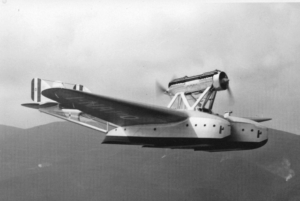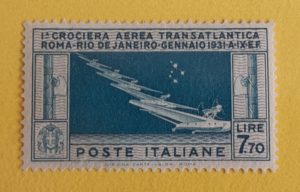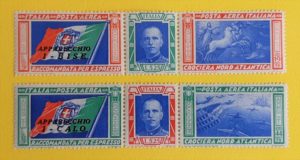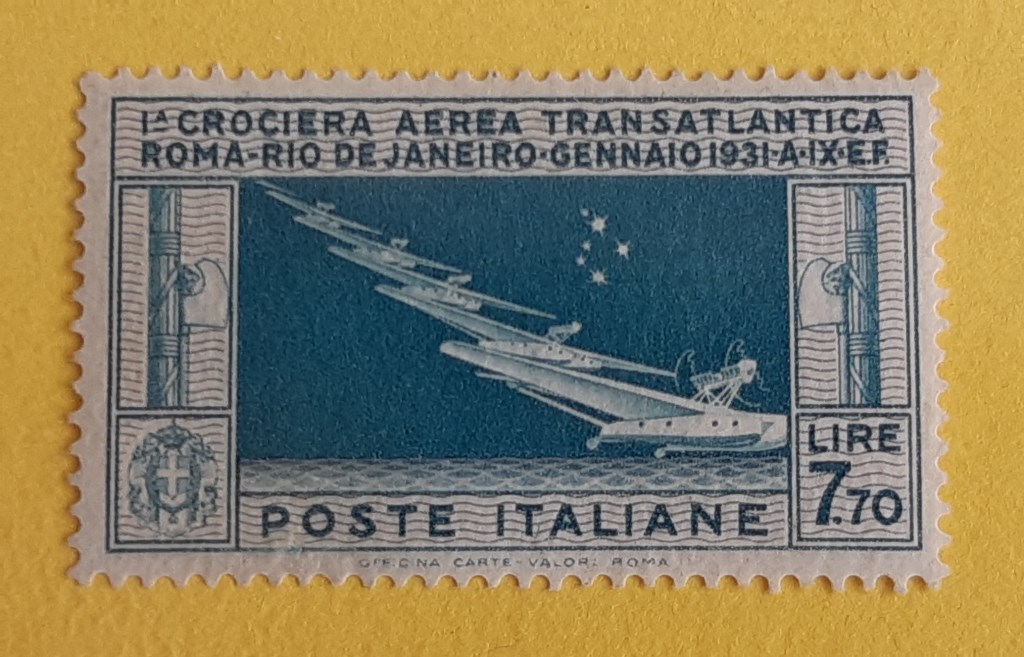Transatlantic Flight 1933
The desire to cross the Atlantic Ocean by air attracted humanity long time ago. Perhaps the most famous (and the first without a stopover) successful attempt was made by Charles Lindbergh. In 1927 he flew his plane nonstop from New York to Paris. However, even on the other side of the Atlantic efforts were made to cross the ocean by a heavier-than-air machine at the time. Perhaps the most famous event of this kind was organized in Italy. In 1930 a group of 12 Savoia Marchetti S 55 seaplanes flew from Orbetello Base, near Rome, to Rio de Janeiro.

Fig. 1: Savoia Marchetti S 55X seaplane with matriculation designation I – NAPO
(source: warbirdsnews.com).

Figure 2: Air mail postage stamp issued in 1930 – Transatlantic Flight from Rome to Rio de Janeiro.
An even larger flyby took place in 1933 when a group of twenty-four (originally 25) seaplanes flew from Italy to Chicago and New York. Both flybys were made with several stopovers and were led by the well-known Italian general Italo Balbo. This significant success of the Italian Air Force was also reflected in philately. In 1930 and 1933 postage stamps celebrating this success were issued. Especially the stamps from 1933 were very interesting for this period since the stamp was made up of three parts (hence their nickname “Trittico” i.e. Triptych). The stamps were issued with a black “APPARECCHIO” overprint and a matriculation marking of a particular aircraft.

Figure 3: Air stamps issued in 1933 so-called “Trittico”.
The stamps were issued in two values of 5.25+19.75 Lira and 5.25+44.75 Lira. They were distributed in sheets, which contained 20 pieces of stamps. In the table below we present a list of matriculation designation of aircraft in the order as printed on individual stamps of the sheet. The names of the pilots are indicated in brackets.
|
I – BALB (Italo Balbo) |
I – BORG (Bruno Borghetti) |
|
I – PELL (Aldo Pellegrini) |
I – MIGL (Alessandro Miglia) |
|
I – LONG (Ulysse Longo) |
I – ROVI (Umberto Rovis) |
|
I – NANN (Umberto Nannini) |
I – TEUC (Giuseppe Teucci) |
|
I – DINI (Mario Baldini) |
I – QUES (Luigi Questa) |
|
I – GIOR (Gennaro Giordano) |
I – LEON (Leonello Leone) |
|
I – RECA (Enea Recagno) |
I – VERC (Alessandro Vercelloni) |
|
I – BIAN (Vincenzo Biani) |
I – NAPO (Silvio Napoli) |
|
I – ARAM (Mario Aramu) |
I – RANI (Celso Ranieri) |
|
I – BISE (Attilio Biseo) |
I – CALO (Jacopo Calò Carducci) |
Photos 2 and 3 used in this article – private collection of the author.
